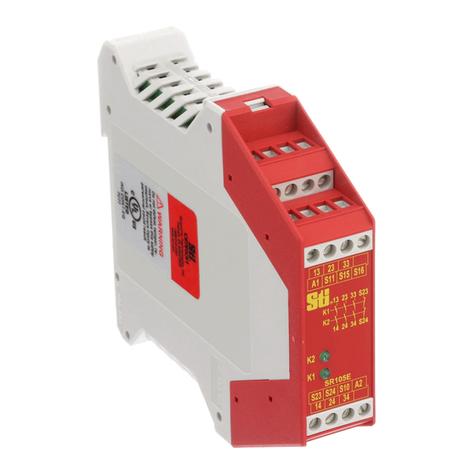
S8V-CP
2
Ratings, Characteristics, and Functions
*1. For power input terminals, use 35 A max. per pole.
*2. A voltage drop will occur in the S8V-CP. Consider the voltage drop at the output.
*3. When selecting the power supply, be sure to include the power consumption of the S8V-CP and not just the power consumption of the load.
*4. Outputs start in order from +VO1 to +VO8. +VO1 starts after the initialization time. Start-up delay time of each output is automatically decided
depending on the load. If the start-up delay time is over 5 s, the next output is forcibly started.
*5. Refer to Tripping Functions on page 3 for details.
*6. Refer to Current Tripping Characteristics and Current and Voltage Tripping Characteristics on page 7 for details.
*7. MTBF is calculated according to JEITA RCR-9102.
*8. Refer to Recommended Replacement Periods and Periodic Replacement for Preventive Maintenance on page 14 for details.
*9. UL Class 2 output applies for the S8V-CP0424S model only.
Model S8V-CP0424 S8V-CP0424S S8V-CP0824
Number of Outputs 448
Item UL Class 2 output No Yes No
I/O
characteristics
Rated input voltage
(Input voltage allowable range)
24 VDC
(20 to 30 VDC)
24 VDC
(20 to 28.8 VDC)
24 VDC
(20 to 30 VDC)
Allowable input current *140 A 15.2 A 70 A
Max. rated output current (per output) 10 A 3.8 A 10 A
Internal voltage drop *2180 mV typ. 180 mV typ. 200 mV typ.
Output leakage current 10 mA max.
Power
consumption
(at input voltage
24 VDC) *3
When all outputs are
connected 8 W typ. (at 10 A x 4 CH) 4 W typ. (at 3.8 A x 4 CH) 15 W typ. (at 10 A x 7 CH)
When all outputs are
tripped 0.7 W typ. 0.8 W typ. 1.1 W typ.
Start-up time *4Initialization time 250 ms typ.
Start-up delay time 50 ms to 5 s
Functions *5
Current tripping
function *6
Rated output current 2 A, 3 A, 4 A, 6 A,
8 A, 10 A 3.8 A 2 A, 3 A, 4 A, 6 A,
8 A, 10 A
Cutoff current 2.5 A, 3.5 A, 4.5 A, 6.5 A,
8.5 A, 10.5 A 3.8 A 2.5 A, 3.5 A, 4.5 A, 6.5 A,
8.5 A, 10.5 A
Over voltage tripping function *6No Yes No
Push button (ON/OFF/RESET)
with indicator Yes (LED colors: Red/Green/Yellow)
Reset signal input (RST) Yes (High level: 20 to 30 VDC, Low level: 0 to 5 VDC)
Alarm signal output (ALM1/ALM2) Yes (MOS FET relay output 30 VDC max., 50 mA max.)
Insulation Dielectric strength 1.0 kVAC for 1 min (between all terminals and DIN rail mounting parts), current cutoff 20 mA
Insulation resistance 100 MΩmin. (between all terminals and DIN rail mounting parts) at 500 VDC
Environment
Ambient operating temperature -25 to 70°C (Derating is required according to the temperature.) (with no condensation or icing)
Storage temperature -40 to 85°C (with no condensation or icing)
Ambient operating humidity 5% to 96% (storage humidity: 5% to 96%)
Vibration resistance 10 to 55 Hz, maximum 5 G, 0.42 mm half amplitude for 2 h each in X, Y, and Z directions
Shock resistance 294 m/s2, 3 times each in ±X, ±Y, ±Z directions
Reliability MTBF *7135,000 hrs typ. 60,000 hrs typ. 60,000 hrs typ.
Life expectancy *810 years min.
Construction
Weight 160 g max. 170 g max. 420 g max.
Cooling fan No
Degree of protection IP20 by IEC60529
Standards
EMI Conforms to EN 61000-6-3
EMS Conforms to EN 61000-6-2
Safety standards
UL 508 (CSA22.2 No.14-10) Listing Pol2
UL 2367 Recognition (Max. 100W per output, per Class 2 limitations) Pol2 *9
CE (EN 61000-6-2, EN 61000-6-3)




























